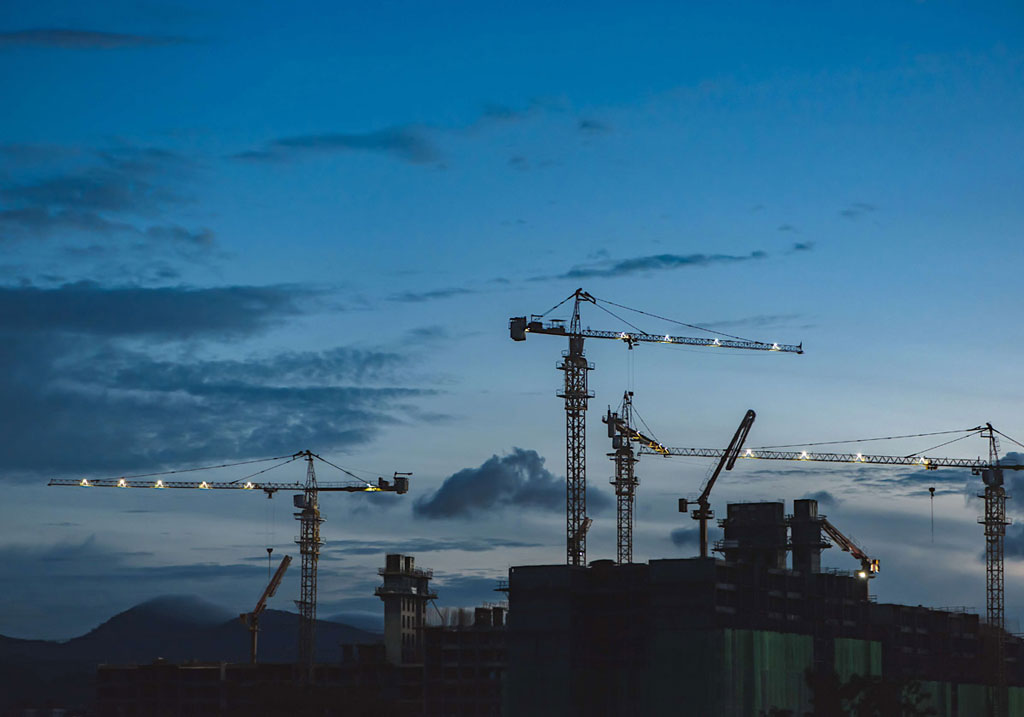Property Developers Reluctant to Push Ahead With New Projects
As projects in the design phase are placed on hold across property sectors, uncertainty around the coronavirus pandemic is expected to impact the construction industry for the remainder of 2020, according to Rider Levett Bucknall.
Releasing its latest crane count, Australia’s total number of cranes stands at 722, down 35 cranes, from 757 in the third quarter of 2019.
With construction deemed an essential service by federal and state governments, Rider Levett Bucknall’s Domenic Schiafone expects the Covid-19 pandemic to continue to impact the industry for the remainder of this year.
“Any shutdown of the industry will be felt for far longer than the shutdown period, as maintaining both the workforce and supply chains during a closedown will be difficult,” Schiafone said.
“The industry has never seen this type of disruption in generations and the speed of mobilisation is an unknown.”
The biannual index tracks the numbers of cranes in Australia’s key cities, giving a measure of the current state of the construction industry’s workload.
Sydney continues to lead the crane count, with 299 cranes, while Melbourne’s count stands at 196, reveals the RLB Crane Index.
Both capital cities recorded falls in crane numbers for the period—albeit varying sectors—Melbourne’s cranes dropped in the residential sector from 149 to 122, while Sydney’s cranes dropped from 44 to 32 in commercial, and education cranes dropped from 12 cranes down to three.
“The outlook is uncertain, as we all know we could be living with these restrictions for some time” RLB New South Wales managing director Matthew Harris said.
“Some property developers, investors and listed entities are reluctant to push ahead with any new projects.
“Both federal and state governments have indicated they wish to move ahead with new building and infrastructure projects given they want to keep the industry going. It remains to be seen how quickly this will happen and to what levels,” he said.
Australia’s crane activity by sector
| Opening Count Q3 2019 | Closing Count Q1 2020 | |
| Civic | 4 | 3 |
| Civil | 37 | 35 |
| Commercial | 82 | 78 |
| Education | 25 | 24 |
| Health | 18 | 18 |
| Hotel | 19 | 20 |
| Mixed Use | 44 | 53 |
| Recreation | 2 | 2 |
| Residential | 521 | 484 |
| Retail | 5 | 5 |
| Total | 757 | 722 |
RLB Crane Index | Q1 2020 | 16th Edition
Schiafone said that project work from a pre-contract point of view is frozen.
“Due to there being — at this stage — no end to the restrictions put into place,” Schiafone said.
“Projects across most sectors, in the design phase, have virtually been put on hold.
“Pre Covid-19, the general feeling was one of optimism as new projects that were planned would come on stream to replace some of the activity coming to an end, and while not at record levels, 2020 volumes would be comparatively near or above the 10-year average across the country.”
“However, this is has tapered off from late last year and is now forecast to drop more rapidly,” he said.
Australia’s crane activity by key cities
| Opening count Q3 2019 | Closing Count Q1 2020 | |
| Adelaide | 19 | 15 |
| Brisbane | 57 | 58 |
| Canberra | 25 | 27 |
| Central Coast | 14 | 9 |
| Darwin | 1 | 1 |
| Gold Coast | 29 | 33 |
| Hobart | 5 | 4 |
| Melbourne | 213 | 196 |
| Newcastle | 12 | 17 |
| Perth | 34 | 37 |
| Sunshine Coast | 11 | 11 |
| Sydney | 319 | 299 |
| Wollongong | 18 | 15 |
| Total | 757 | 722 |
RLB Crane Index | Q1 2020 | 16th Edition
Residential cranes down, non-residential cranes up
The residential sector recorded the largest fall for cranes, down by 37, now accounting for 66 per cent of cranes across Australia.
Residential cranes are down from a record high of 86 per cent in late 2017.
The index notes that non-residential cranes reached a record number value since 2012, with 238 non-residential cranes across Australia on projects across the commercial, education, health and infrastructure sectors.
Two projects in Brisbane make up 30 per cent of all cranes erected in Brisbane. The Queens Wharf and Cross River Rail projects have a combined 17 cranes.
Sydney was home to 299 cranes at the end of the first quarter of 2020, Melbourne 196, Brisbane 58, Perth 37, the Gold Coast 33, Canberra 27, Adelaide 15, Wollongong 15, Sunshine Coast 11, Newcastle 17, Hobart 4, and Darwin home to one.
Brisbane, Canberra, Newcastle, Perth and the Gold Coast were the five cities that recorded an increase of cranes, according to the RLB Crane Index.
Adelaide, Central Coast, Hobart, Melbourne, Sydney and Wollongong were the six cities that recorded lower numbers of cranes, while Darwin and the Sunshine Coast remained the same.
The index notes that national building work was down by 4 per cent last year in Chain Volume Measures, residential activity droped by 8 per cent and non-residential increased by 5 per cent.




